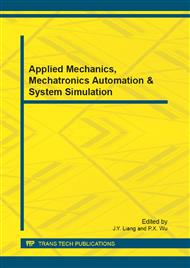p.56
p.60
p.64
p.68
p.72
p.76
p.81
p.85
p.89
Chemical Stability and Thermal Property of Hollow Hydroxyapatite Microspheres Fabricated by a Glass Immersion Process
Abstract:
In recent years there has been increasing interest concerning the synthesis of hollow materials in nanometer to micrometer dimensions. Hollow hydroxyapatite(HAP) microspheres with pores on their surfaces were prepared by a Li-Ca-B glass in situ immersion conversion process in an aqueous phosphate solution at 37°C. The chemical reaction ability of the Li-Ca-B glass was studied by immersing the glass in SBF solution, and the phases of the reaction product were identified by the XRD method. The morphology, composition, phases and thermal property of the hollow HAP microspheres were investigated using by chemical analysis, SEM ,and XRD . The microphere wall consisted of calcium deficient hydroxyapatite (CDHAP) crystals only. Furthermore, the formation mechanism of the hollow HAP microsphere was also discussed.
Info:
Periodical:
Pages:
72-75
Citation:
Online since:
September 2012
Authors:
Price:
Сopyright:
© 2012 Trans Tech Publications Ltd. All Rights Reserved
Share:
Citation:


